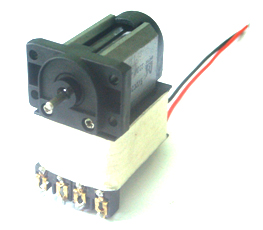
Synchronous Motor
A synchronous motor is an AC motor whose shaft rotation is in sync with the supply current’s frequency as the motor runs at a steady state. Consequently, the integral number of AC cycles is the same as the rotation period.
Synchronous Motor Operation
Electromagnets on the stator of a synchronous motor create a magnetic field that rotates at the same time as the oscillations of the line current. The magnetic field also causes the rotor to turn in step and at the same rate.
When the poly-phase supply excites the stator winding, a rotating magnetic field occurs within the motor. Then, synchronization occurs when the rotor begins to rotate along with the magnetic field.
Synchronous Motor Speed
As a synchronous motor runs, its speed depends on the supply frequency and a constant magnetic field. When there’s a constant-magnitude flux, there’s also constant-magnitude torque. If the motor’s load goes beyond its breakdown load, the motor will fall out of sync and won’t rotate with the magnetic field. When this happens, the motor won’t have synchronous torque. To help address this issue, some manufacturers use a squirrel-cage damper winding to stabilize the motor as well as help start it, since a synchronous motor has no average torque when it’s still.
